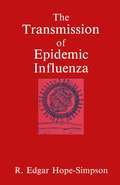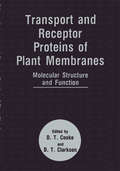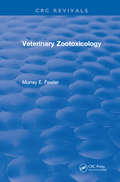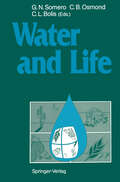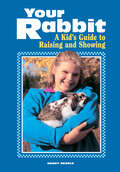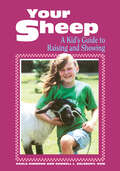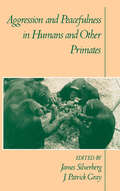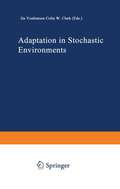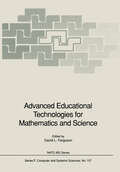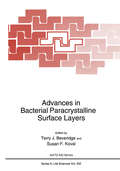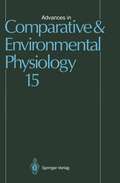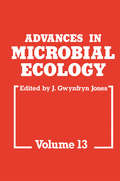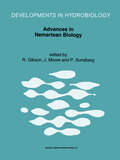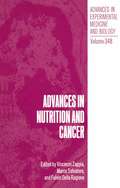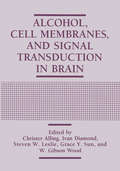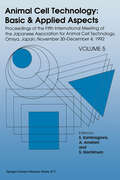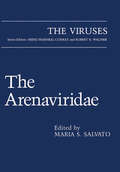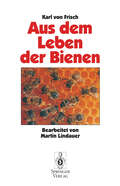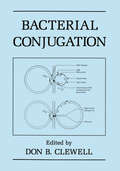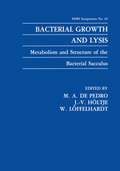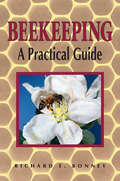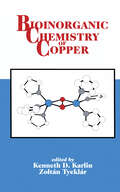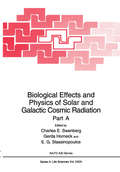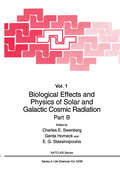- Table View
- List View
The Transmission of Epidemic Influenza
by R.E. Hope-SimpsonTHE PLAGUE YEARS Mankind has always been fascinated by "origins," and biologists are no exception. Darwin is our most famous example. What is the origin of mankind, of species, of infectious diseases? In the last few years we have seen the emergence and spread of some apparently "new" viruses, such as HIV -1 and the virus causing bovine spongiform encephalomyelopathy. But are these, in fact, entirely new agents, or mutated forms of "old" viruses that have evolved along with us for eons? Edgar Hope-Simpson could not have written this book at a more opportune moment. He is a firm believer in gradual evolution, rather than the sudden arrival of new agents. I suspect that he would also have a naturalist's Darwinian approach for the origin of AIDS. It has been a source of some amazement to me over the years how even the most innovative scientists conform to a current hypothesis. Pioneer thinking comes more easily to persons outside the scientific mainstream. Edgar Hope Simpson has always struck me as a modem-day naturalist of the classic style, observant and perhaps a little maverick in line of thought. Certainly, the central hypothesis propounded in this book will be controversial to many scientists. From his unique citadel, the Epidemiological Research Unit in Cirencester, he has carefully reexamined mortality data from old records as well as new.
Transport and Receptor Proteins of Plant Membranes: Molecular Structure and Function
by D. T. Clarkson D. T. CookeVeterinary Zootoxicology
by Murray E. FowlerOnly clinically oriented volume devoted to poisonous animals and venoms. Veterinary Zootoxicology provides an excellent overview of the state of the art in venom research. Clinical problems encountered in the United States are emphasized, but situations that occur in other areas of the world are examined as well. The book describes clinical syndromes caused by poisonous animals and provides facts, techniques, methodologies, and regimens designed to improve the clinical management of animals envenomated by other animals. Veterinary Zootoxicology is ideal for practicing veterinarians, students, instructors, wildlife biologists, and others who must know how to evaluate, diagnose, and treat envenomated animals.
Veterinary Zootoxicology
by Murray E. FowlerOnly clinically oriented volume devoted to poisonous animals and venoms. Veterinary Zootoxicology provides an excellent overview of the state of the art in venom research. Clinical problems encountered in the United States are emphasized, but situations that occur in other areas of the world are examined as well. The book describes clinical syndromes caused by poisonous animals and provides facts, techniques, methodologies, and regimens designed to improve the clinical management of animals envenomated by other animals. Veterinary Zootoxicology is ideal for practicing veterinarians, students, instructors, wildlife biologists, and others who must know how to evaluate, diagnose, and treat envenomated animals.
Water and Life: Comparative Analysis of Water Relationships at the Organismic, Cellular, and Molecular Levels
by George N. Somero Charles B. Osmond Carla L. BolisPresenting an analysis of the water relationships of the major groups of organisms: fungi, plants and animals, the text examines water stress at all levels of biological organization. Topics covered include: 1) organic osmotic agents: their distributions, modes of action, and mechanisms of regulation; 2) desiccation stress; mechanisms for preserving cellu lar integrity under conditions of low cellular water activity; 3) water stress and water compartmentation in plants; and 4) freezing stress: the prevention and regulation of ice formation in biological fluids, and mechanisms for overcoming the damaging effects of low temperatures on cellular integrity. Common adaptive strategies in diverse organisms are emphasized, as well as the fundamental physical-chemical properties of aqueous solutions that establish the nature of the interactions among water, low molecular weight solutes and macromolecules.
Your Rabbit: A Kid's Guide to Raising and Showing
by Nancy SearleDesigned for children ages 9 and up who are interested in raising rabbits, this comprehensive guide covers all aspects of rabbit care with an encouraging tone and age-appropriate language. Nancy Searle provides expert advice on breed selection, housing, feeding, safety, and understanding rabbit behavior. Whether your child is hoping to keep rabbits as pets or breed them for showing, Your Rabbit has everything she&’ll need to know to confidently raise happy and healthy animals.
Your Sheep: A Kid's Guide to Raising and Showing
by Paula Simmons Darrell L. SalsburyWhether you're getting your first sheep or would like to learn more about caring for and showing the sheep you have, Your Sheep has the information you need to be successful. Paula Simmons and Darrell Salsbury cover everything you need to know, from choosing and buying the right sheep to feeding, heath care, shearing, showing, breeding, and lambing.
Aggression and Peacefulness in Humans and Other Primates
by James Silverberg J. Patrick GrayThis book explores the role of aggression in primate social systems and its implications for human behavior. Many people look to primate studies to see if and how we might be able to predict violent behavior in humans, or ultimately to control war. Of particular interest in the study of primate aggression are questions such as: how do primates use aggression to maintain social organization; what are the costs of aggression; why do some primates avoid aggressive behavior altogether. Students and researchers in primatology, behavioral biology, anthropology, and psychology will read with interest as the editors and contributors to this book address these and other basic research questions about aggression. They bring new information to the topic as well as an integrated view of aggression that combines important evolutionary considerations with developmental, sociological and cultural perspectives.
Adaptation in Stochastic Environments (Lecture Notes in Biomathematics #98)
by Jin Yoshimura Colin W. ClarkThe classical theory of natural selection, as developed by Fisher, Haldane, and 'Wright, and their followers, is in a sense a statistical theory. By and large the classical theory assumes that the underlying environment in which evolution transpires is both constant and stable - the theory is in this sense deterministic. In reality, on the other hand, nature is almost always changing and unstable. We do not yet possess a complete theory of natural selection in stochastic environ ments. Perhaps it has been thought that such a theory is unimportant, or that it would be too difficult. Our own view is that the time is now ripe for the development of a probabilistic theory of natural selection. The present volume is an attempt to provide an elementary introduction to this probabilistic theory. Each author was asked to con tribute a simple, basic introduction to his or her specialty, including lively discussions and speculation. We hope that the book contributes further to the understanding of the roles of "Chance and Necessity" (Monod 1971) as integrated components of adaptation in nature.
Advanced Educational Technologies for Mathematics and Science (NATO ASI Subseries F: #107)
by David L. FergusonThis book is the outgrowth of a NATO Advanced Research Workshop, held in Milton Keynes (United Kingdom) in the summer of 1990. The workshop brought together about 30 world leaders in the use of advanced technologies in the teaching of mathematics and science. Many of these participants commented that the workshop was one of the more productive and exciting workshops that they had attended. It was not uncommon to see participants engaged in informal discussion far into the evenings and early mornings, long after formal sessions had ended. It is my hope that this book captures the substance and excitement of many of the ideas that were presented at the workshop. Indeed, the process by which this book has come about has given every opportunity for the best thinking to get reflected here. Participants wrote papers prior to the workshop. After the workshop, participants revised the papers at least once. In a few instances, three versions of papers were written. Some participants could not resist the urge to incorporate descriptions of some of the newer developments in their projects. The papers in this book demonstrate how technology is impacting our view of what should be taught, what can be taught, and how we should go about teaching in the various disciplines. As such, they offer great insight into the central issues of teaching and learning in a wide range of disciplines and across many grade levels (ranging from elementary school through undergraduate college education).
Advances in Bacterial Paracrystalline Surface Layers (Nato Science Series A: #252)
by Terry J. Beveridge Susan F. KovalThis book is a compilation of the research which was presented during the NATO-Advanced Research Workshop (ARW) entitled "Advances in Bacterial Paracrystalline Surface Layers" held in London, Ontario, Canada during September 27 to 30, 1992. The organizing committee consisted of the two Workshop directors, S. F. Kaval and T. J. Beveridge, and H. König, U. B. Sleytr and T. J. Trust; their summary statements about the significance and success of the NATO-ARWare in Chapter 37 of this book. This was the third international workshop on bacterial S-layers and it demonstrated unequivocally how rapidly research is progressing. The Workshop was made possible by financial support from the North Atlantic Treaty Organization (NATO), the Medical Research Council of Canada (MRC), the Natural Seiences and Engineering Research Council of Canada (NSERC), and the Canadian Bacterial Diseases Network (CBDN) which is a Canadian National Centre of Excellence (NCE). We are very grateful for the support from all of these agencies since their financial aid made it possible to bring to London, Canada a truly international group of S-layer experts. We encouraged the attendance and participation of graduate fellows and research associates, and their presentations students, postdoctoral was an intense three constitute the "Poster" section of this book. The NATO-ARW day workshop held at a delightful secluded location (Spencer Hall) so that the delegates had both formal and informal occasions to interact and evolve new ideas.
Advances in Comparative and Environmental Physiology: Volume 15 (Advances in Comparative and Environmental Physiology #15)
by G. F. Ball J. Balthazart M. Hidaka I. Novak M. WheatlyAdvances in Comparative and Environmental Physiology helps biologists, physiologists, and biochemists keep track of the extensive literature in the field. Providing comprehensive, integrated reviews and sound, critical, and provocative summaries, this series is a must for all active researchers in environmental and comparative physiology.
Advances in Microbial Ecology (Advances in Microbial Ecology #13)
by John Gwynfryn JonesKevin Marshall is a hard act to follow. Volume 13 of Advances in Microbial Ecology has been produced by a new editorial board, and we, the members of that board, are delighted to have the opportunity to pay tribute to Kevin's achievements. In his time as Series Editor, the quality of the chapters submitted and the range of subject matter covered have ensured an expanding and more stimulated readership. This represents a considerable achievement, given the growth in the number of review volumes and the increasing tendency for journals to publish review articles. The achievement was reached not only through metic ulous attention to quality and detail but also by providing a forum for the expression of views, information, and results that would stimulate discussion. Advances in Microbial Ecology will continue to provide such a focus, although, because of the frequency of publication, it would not be practicable to introduce a "reply" or "comment" section. Although we do not deliberately aim to provide a forum for controversy, we encourage speculation based on sound scientific arguments. In addition, we would like to encourage authors to offer chapters for consideration. In the past, the volumes have largely comprised invited chapters. With the best will in the world, an editorial board of four cannot claim adequate coverage of such a vast and rapidly developing research area. We would there fore welcome submission of outline plans for chapters, which should be sent to the Editor.
Advances in Nemertean Biology: Proceedings of the Third International Meeting on Nemertean Biology, Y Coleg Normal, Bangor, North Wales, August 10–15, 1991 (Developments in Hydrobiology #89)
by R. Gibson J. Moore Per LundbergIn any scientific discipline, meetings with presented papers and discussions are the most effective stimulus to the advancement of knowledge. Nemerteans have long been largely neglected because their taxonomy is difficult: the need for histological study of serial sections has proved inhibiting to most zoologists. During the last twenty years, however, this intriguing phylum has attracted the attention both of increasing numbers of taxonomists as well as of workers interested in many aspects of, for example, their ecology, evolution, physiology and fine structure. The enthusiam stemming from the First International Meeting held in Philadelphia during December 1983 made it abudantly clear that regular meetings of this type should be continued. The Second, at the Tjärnö Marine Biological Laboratory in Sweden (August 1986), emphasized the importance of such international gatherings. The Third Meeting was held in Britain, at Y Coleg Normal, Bangor, North Wales, August 10--15, 1991, with 24 participants from six countries. This volume records most of the papers given at the conference.
Advances in Nutrition and Cancer (Advances in Experimental Medicine and Biology #348)
by Vincenzo Zappia Marco Salvatore Fulvio Della RagioneThis volume contains the scientific contributions presented at the International Symposium held in Naples, Italy, in November 1992 at the National Tumor Institute "Fondazione Pascale". The Meeting gathered together experts from different disciplines, all involved in the vital and timely subject of Nutrition and Cancer. About 15 years ago a consensus among cancer epidemiologists began to emerge suggesting that diet might be responsible for 30-60% of the cancers in the developed world. The best estimate, reported in a now classical paper by Richard Doll and Richard Peto (1981), was that by dietary modification, it would be possible to reduce fatal cancers by about 35%. Within about six years there was widespread agreement that the principal changes required were a reduction in consumption of fat, along with an increase in the consumption of fruit, green and yellow vegetables, dietary fiber, and some micronutrients. Attention was also paid to the methods of cooking and preservation of foodstuffs. On the other hand very few, if any, effects were attributed to food additives and to pollution of food by trace pesticides, to which the general public often gives unfounded importance.
Alcohol, Cell Membranes, and Signal Transduction in Brain
by Christer Alling Ivan Diamond Steven W. Leslie Grace Y. Sun W. Gibson WoodAlcohol abuse and alcoholism are international problems whose costs economical ly, psychologically and medically have been well documented. Alcohol is a unique drug in that the effects of excessive use can have a deleterious effect on most if not all organs of the body. The brain is one of the organs most affected by excessive alcohol consumption. Effects on the brain can be seen in cognitive function, brain structure and neurochemistry. Over the past few years, there have been significant advances made in understanding how alcohol affects brain neurochemistry. This book examines four major areas, i. e. , membrane lipids, receptors and ion channels, second messengers, and gene expression, where significant advancements have been made. The book is divided into four sections based on the four major areas. In each section, data are examined that cover a range of approaches from in vitro to in vivo studies. The section on membrane lipids includes recent developments in how ethanol affects membrane cholesterol domains, polyunsaturated fatty acids, the cause and consequences of phosphatidylethanol formation, and the modulation of membrane protein function by lipid-protein interaction. The second section comprises chapters on NMDA and 5-HT3 receptors, including new aspects on alcohol neurotoxicity and the molecular heterogeneity that may underlie differences in alcohol sensitivity as well as chapters on GABA-gated chloride flux, and calcium channels.
Animal Cell Technology: Proceedings of the Fifth International Meeting of the Japanese Association for Animal Cell Technology, Omiya, Japan, November 30–December 4, 1992 (Animal Cell Technology: Basic & Applied Aspects #5)
by S. Kaminogawa A. Ametani S. HachimuraAnimal cell technology has been making tremendous progress. Originally this term reminded people of engineering for high density and large volume culture of animal cells. At present many fields of biological sciences are aiming at advance in animal cell technology. Cell culture engineering is aided not only with developments in apparatus, matrix, media, and computational analysis, but also with new biological procedures in gene and protein technology, cell biological resources and immunological methods. Results obtained with animal cell technology are applied to production of pharmaceuticals, diagnosis reagents and food endowed with physiological functions, and cell and gene therapy of animals and humans, and useful for elucidating scientific phenomena. It is also essential to establish methods of evaluation for functionality and safety of newly discovered molecules and cells. The progress in animal cell technology is supported by, and attributes in both of basic and applied sciences. The proceedings of the Fifth International Meeting of the Japanese Association for Animal Cell Technology (JAACT) covers the subjects above mentioned. The articles in this book will help researchers in many fields to understand the current status and future trends in animal cell technology. JAACT organized this Meeting and we express our gratitude to the members of JAACT. We gratefully acknowledge all the members of the organizing committee for their dedication in assuring the Meeting's success. For their valuable supports, we also thank the Japanese Biolndustry Association and Saitama Foundation for Culture and Industry.
The Arenaviridae (The Viruses)
by Maria S. SalvatoIn this volume, a distinguished international group of contributors present the latest molecular, organismal, and epidemiological research on arenaviruses. Their work will broaden both the clinician's and the researcher's knowledge of basic mechanisms of immunological tolerance, viral immunosuppression, the nature of protective immune responses to vaccination, and viral effects on cell functions.
Aus Dem Leben der Bienen
by Karl v. FrischDas berühmte Buch des Nobelpreisträgers Karl von Frisch liest sich wie eh und je leicht, einprägsam und flüssig.
Bacterial Conjugation
by D. B. ClewellBacterial plasmids originating in a wide range of genera are being studied from a variety of perspectives in hundreds of laboratories around the globe. These elements are well known for carrying "special" genes that confer important survival properties, frequently neces sary under atypical conditions. Classic examples of plasmid-borne genes are those provid ing bacterial resistance to toxic substances such as antibiotics, metal ions, and bacte riophage. Often included are those determining bacteriocins, which may give the bacterium an advantage in a highly competitive environment. Genes offering metabolic alternatives to the cell under nutritionally stressed conditions are also commonly found on plasmids, as are determinants important to colonization and pathogenesis. It is likely that in many, if not most, cases plasmids and their passenger determinants represent DNA acquired recently by their bacterial hosts, and it is the characteristic mobility of these elements that enables their efficient establishment in new bacterial cells by the process known as conjugation. Whereas many plasmids are fully capable of promoting their own conjugal transfer, others move only with help from coresident elements. The ability of a plasmid to establish itself in a variety of different species is com mon, and recent studies have shown that transfer can in some cases occur from bacterial cells to eukaryotes such as yeast.
Bacterial Growth and Lysis: Metabolism and Structure of the Bacterial Sacculus (F.E.M.S. Symposium Series #65)
by M. A. De Pedro J. V. Höltje Wolfgang LöffelhardtThis volume is based on a FEMS Symposium entitled "Bacterial Growth and Lysis: Metabolism and Structure of the Bacterial Sacculus" held at the Monastery of Lluc (Mallorca, Spain) on 5-10 April, 1992. The goals of the symposium were to assess the present state of knowledge on the structure and physiology of the bacterial murein sacculus, and to develop new hypotheses and strategies to promote further development of the field. Consequently, the contributions compiled in this volume include broadly different approaches, from the introduction of new analytical methods to the presentation of provocative models for cell wall growth and division. Structural, biochemical, and genetic aspects are widely covered with special emphasis on the enzymology and regulation of murein hydrolases (autolysins). Comprehensive reviews on bacterial S layers and yeast cell walls are included to stimulate conceptual cross-feeding with these closely related topics. We believe that this book will provide the reader with a useful and up-to-date review of the topic. We would feel deeply rewarded by any positive influence this book may have on the future progress of the field, whereby all the scientific credit for it should be given to the authors of the excellent contributions presented.
Beekeeping: A Practical Guide
by Richard E. BonneyKeep your own bees and enjoy delicious golden honey from your own backyard. With his respect and admiration for bees evident on every page, Richard E. Bonney describes how to acquire bees, manage a hive, prevent and treat diseases, and extract a crop of honey. Enthusiastic beekeepers of every stripe and experience level will benefit from Bonney&’s astonishing knowledge of the craft — from beekeeping history and honeybee biology to the complex social structure of the hive.
Bioinorganic Chemistry of Copper
by K.D. Karlin Z. TyeklarBioinorganic Chemistry of Copper focuses on the vital role of copper ions in biology, especially as an essential metalloenzyme cofactor. The book is highly interdisciplinary in its approach--the outstanding list of contributors includes coordination chemists, biochemists, biophysicists, and molecular biologists. Chapters are grouped into major areas of research interest in inorganic copper chemistry, spectroscopy, oxygen chemistry, biochemistry, and molecular biology. The book also discusses basic research of great potential importance to pharmaceutical scientists. This book is based on the first Johns Hopkins University Copper Symposium, held in August 1992. Researchers in chemistry, biochemistry, molecular biology, and medicinal chemistry will find it to be an essential reference on its subject.
Biological Effects and Physics of Solar and Galactic Cosmic Radiation: Part A (Nato Science Series A: #243A)
by Charles E. Swenberg Gerda Horneck E. G. StassinopoulousSpace missions subject human beings or any other target of a spacecraft to a radiation environment of an intensity and composition not available on earth. Whereas for missions in low earth orbit (LEO), such as those using the Space Shuttle or Space Station scenario, radiation exposure guidelines have been developed and have been adopted by spacefaring agencies, for exploratory class missions that will take the space travellers outside the protective confines of the geomagnetic field sufficient guidelines for radiation protection are still outstanding. For a piloted Mars mission, the whole concept of radiation protection needs to be reconsidered. Since there is an increasing interest ci many nations and space agencies in establishing a lunar base and lor exploring Mars by manned missions, it is both, timely and important to develop appropriate risk estimates and radiation protection guidelines which will have an influence on the design and structure of space vehicles and habitation areas of the extraterrestrial settlements. This book is the result of a multidisciplinary effort to assess the state of art in our knowledge on the radiation situation during deep space missions and on the impact of this complex radiation environment on the space traveller. ]t comprises the lectures by the faculty members as well as short contributions by the students given at the NATO Advanced Study Institute "Biological Effects and Physics of Solar and Galactic Cosmic Radiation" held in Armacao de Pera, Portugal, 12-23 October, 1991.
Biological Effects and Physics of Solar and Galactic Cosmic Radiation Part B (Nato Science Series A: #243B)
by Charles E. Swenberg Gerda Horneck E. G. StassinopoulousSpace missions subject human beings or any other target of a spacecraft to a radiation environment of an intensity and composition not available on earth. Whereas for missions in low earth orbit (LEO), such as those using the Space Shuttle or Space Station scenario, radiation exposure guidelines have been developed and have been adopted by spacefaring agencies, for exploratory class missions that will take the space travellers outside the protective confines of the geomagnetic field sufficient guidelines for radiation protection are still outstanding. For a piloted Mars mission, the whole concept of radiation protection needs to be reconsidered. Since there is an increasing interest of many nations and space agencies in establishing a lunar base and lor exploring Mars by manned missions, it is both, timely and important to develop appropriate risk estimates and radiation protection guidelines which will have an influence on the design and structure of space vehicles and habitation areas of the extraterrestrial settlements. This book is the result of a multidisciplinary effort to assess the state of art in our knowledge on the radiation situation during deep space missions and on the impact of this complex radiation environment on the space traveller. It comprises the lectures by the faculty members as well as short contributions by the students given at the NATO Advanced Study Institute "Biological Effects and Physics of Solar and Galactic Cosmic Radiation" held in Armacao de Pera, Portugal, 12-23 October, 1991.
